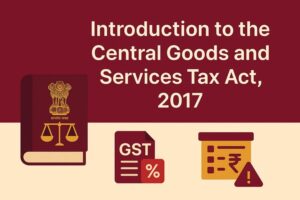How to Check GST Mismatch?
- 11 Dec 24
- 11 mins

How to Check GST Mismatch?
- What Is GST Reconciliation and Matching?
- Understanding ITC Mismatch
- Common Causes of ITC Mismatch
- Tools and Reports for Identifying Mismatch
- Reconciliation of GSTR-2A with Purchase Register
- GST Laws on ITC Mismatch
- Reasons for Mismatch in GST Return:
- Types of Input Credit and How They Are Entered in the GSTR-3B?
- To Give Relief to the Taxpayers for Non-Reflected Invoices in the 2A
- Sending of Notice and Initiation of Further Proceedings
- Conclusion
Key Takeaways
- GST reconciliation is crucial for identifying and rectifying mismatches in returns.
- Accurate ITC claims reduce compliance risks and prevent penalties.
- Reconciliation tools streamline the detection of discrepancies in GSTR-2A/2B and books.
- Provisional ITC claims must comply with Rule 36(4) for seamless tax management.
- Timely correction of mismatches enhances cash flow and business credibility.
GST mismatch is a common issue that the proper officer recognises for various taxpayers. It can lead to penalties and additional charges for the registered taxpayer. It is essential to identify GST mismatches and rectify them to prevent tax evasion by registered taxpayers.
GST reconciliation helps in vendor payments and vendor management, causing vendor delight. Here is how to check GST mismatch to ensure tax compliance for businesses and collect applicable GST, such as CGST, SGST, or IGST.
What Is GST Reconciliation and Matching?

Reconciliation is the process of comparing two data sets to detect and correct unintentional errors or omissions. Short or excess payment of taxes can be identified effectively in the reconciliation process. You can find the below-mentioned mismatches in a reconciliation process:
- Variation between the input tax credit amount in GSTR-3B and GSTR-2A/GSTR-2B
- Differences in sales between GSTR-3B and GSTR-1
- Until 31st December 2021, reconciliation helped identify differences between the provisional credit claimed under CGST Rule 35(4) and the actual credit claimable in GSTR-2B across multiple return periods.
- After the removal of provisional ITC by Section 16(2)(aa), from 1st January 2022, reconciliation helps detect discrepancies between available ITC in GSTR-2B and ITC available in books of accounts.
- Discrepancies between sales details as reflected on the accounts book and GSTR-1 as auto-populated from the e-invoicing system.
- Differences between tax payable as auto-populated in GSTR-3B and the books of accounts.
Understanding ITC Mismatch
A discrepancy between the ITC claims by a taxpayer in GSTR-3B and the ITC available based on GSTR-2A or GSTR-2B results in an input tax credit (ITC) mismatch. It leads to challenges for recipients in claiming ITC while creating cash flow issues and compliance risks for businesses. As a result, GSTR-2B reconciliation followed by correction of GSTR-2A is essential to avoid ITC mismatch.
Common Causes of ITC Mismatch
Here are the common causes of ITC mismatch:
- If suppliers do not upload invoices in GSTR-1, it leads to the absence of invoices in GSTR-2A/2B.
- Incorrect invoice details like invoice number, GSTIN or tax amount.
- If a supplier files delayed GSTR-1, it affects ITC visibility for the relevant period.
Tools and Reports for Identifying Mismatch
As a taxpayer, you can use the reconciliation tool provided on the unified portal or other third-party software to identify discrepancies in invoices. The tool and third-party software help compare the purchase register with GSTR-2A/2B. You can use an advanced reconciliation tool available in the market for effective reconciliation and detection of errors in reconciliation.
A powerful reconciliation tool can efficiently identify issues with GST reconciliation in the invoice for reconciliation. Such a tool can detect transactions with mismatches in monthly reconciliation.
Reconciliation of GSTR-2A with Purchase Register
To identify missing details on the invoice or mismatches in the taxpayer’s purchase register and GSTR-2A/2B, you need to initiate the reconciliation process. It helps undertake corrective measures to rectify errors, if any.
GST Laws on ITC Mismatch
The details that suppliers furnish on GSTR-1 reflect on GSTR-2A/2B of the taxpayer. As per GST law, you need to reconcile ITC claims by the taxpayer. If you fail to reconcile ITC or if there is a mismatch, the recipient will not receive ITC claims. Further, it leads to the imposition of penalties and interest. Here are the provisions for ITC reconciliation:
| Provision | Description |
| Section 42 of the CGST Act | Matched mandates, reversal and reclaim of ITC |
| Rule 69 of CGST Rules | Elaborates on the process of matching ITC claims with GSTR-2A |
| Section 43 of the CGST Act | Presents the procedure for ITC mismatch and its subsequent rectification |
Reasons for Mismatch in GST Return:
Mismatch in GST returns can result for multiple reasons as follows:

Mismatch in GST Return: GSTR-1 and GSTR-3B (for Turnover and Output Tax)
The reasons for the mismatch in GSTR-1 and GSTR-3B are the following:
- Credit notes or debit notes issuance
- Amendments in sales invoice
- Certain invoices might reflect in GSTR-1 and not GSTR-3B, while others might reflect on GSTR-3B and not in GSTR-1.
The mismatches arise as taxpayers often issue invoices to unregistered dealers to reduce sales and output liability while evading taxes payable. Sellers often issue vouchers to unregistered dealers instead of debit and credit notes after receiving payments. This results in unregistered sales by the supplier.
Sellers often issue invoices of nominal amounts to unregistered dealers to transport goods to outstation places. Moreover, certain dealers often file GSTR-1 while refraining from filing GSTR-3B. This results in non-payment of taxes and mismatches in GSTR-1 and GSTR-3B.
Mismatch in GSTR-2A and GSTR-3B ( for ITC )
Pertaining to ITC utilisation, the tax department needs to consider the following aspects:
- ITC claims need to be based on a valid invoice
- The taxpayer should not be ineligible for the ITC claimed
- There needs to be an ITC reversal for exempted and non-business supplies
- The ITC claims should not be more than the ITC reflected on GSTR-2A and ITC utilised in the 3B of the taxpayer
- Taxes under the reverse charge mechanism need to be paid using the cash ledger
Certain taxpayers often do not disclose the reversal of ITC in GSTR-3B for exempt outward supplies. Taxpayers should ensure that they utilise ITC in accordance with that reflected in his/her books.
Here are the reasons for the mismatch in GST returns:
- If a taxpayer with a monthly turnover of more than ₹50 lakh (except exempt and zero-rated supplies) discharges more than 99% of his/her output tax liability using an electronic credit ledger, then he is violating Rule 86B and is excluded from the exemption list.
- Rule 86B has been enforced to prevent unfair practices of taxpayers in terms of ITC claims based on fake purchase invoices without actual purchases.
Types of Input Credit and How They Are Entered in the GSTR-3B?
Here are the five types of input tax credit (ITC):
- ITC Available:
ITC available is the total ITC reflected on 2A based on inward supplies, purchase of inputs, capital goods, import of goods and services and supplies under a reverse charge basis.
- Ineligible ITC:
ITC on inward supplies listed on the negative list is termed ineligible ITC. It includes ITC on food services that businesses receive for staff, cars purchased by the company, cab services received for staff and others. It reflects in Form 2B as a bifurcation of ineligible and eligible credit provided.
- ITC Reversed:
ITC on inputs, capital goods, input services for non-business purposes or exempt supplies is ITC reversed. However, if you claim depreciation on the tax components of capital goods, you will not receive ITC claims.
- Eligible ITC:
Eligible ITC is the difference between ITC reversed from available ITC and ineligible ITC. Ensure you raise correct ITC claims to receive eligible ITC.
- Utilised or Adjusted ITC:
The balance of available ITC that you can use to pay output tax is termed utilised or adjusted ITC. Incorrect adjustment details adversely affect compliance with GST norms.
Declaring ineligible input tax credit clubbed with expenses is essential in the reconciliation of ITC as per 2A. However, ineligible ITC does not affect the input tax credit ledger of a taxpayer. Nevertheless, it is crucial to declare correct input tax credits for GST compliance.
To Give Relief to the Taxpayers for Non-Reflected Invoices in the 2A
According to Rule 36(4) of the CGST Rules, 2017, taxpayers who file GSTR-3B can claim provisional ITC up to 5% of the eligible credit available in GSTR-2A. However, recipients can only avail the 5% claim if the supplier has not paid the tax or has not filed GSTR-1.
Notably, the ITC utilised cannot exceed eligible ITC as per the accounting records. As a result, it is essential to track provisional ITC claims and the invoices that do not reflect in 2A. Annual reconciliation of ITC helps keep track of the ITC claims.
Sending of Notice and Initiation of Further Proceedings

Once you furnish your return, the proper officer scrutinises it under Section 61 as follows:
- Scrutinise and verify the details submitted by the taxpayer in the furnished return
- If the proper officer finds discrepancies, the same needs to be informed to the taxpayer
- The proper officer needs to ask for an explanation from the taxpayer pertaining to the discrepancies.
- If the proper officer finds the explanation acceptable under sub-rule 2A of 21A or rule 86B, the registered person needs to be informed and the process will continue.
- In case the registered person does not explain within 30 days of receiving notice from the proper officer or the explanation is unacceptable, the proper officer will initiate appropriate action under Section 65, Section 66 or Section 67.
- The proper officer might as well proceed to determine the tax amount and additional dues under Section 73 or Section 74.
Here is the process to issue a notice to the taxpayer if the proper officer finds discrepancies during scrutiny in accordance with Rule 99 under Section 61:
- To inform the registered person about discrepancies in invoice details, and discrepancies in sales details and ask for an explanation, the proper officer needs to issue a notice in Form GST ASMT-10 to suppliers for correction.
- The registered taxpayer has to provide his/her explanation within 30 days or more if permitted by the proper officer.
- It is the proper officer’s responsibility to include the tax amount, interest and other amount payable in the notice.
- If the registered person accepts the errors in invoice details, he/she needs to correct the same in the return of the month under Section 61(3).
- In case the registered person does not accept the discrepancy raised by the proper officer, he/she has to explain Form GST ASMT-11.
- If the explanation furnished by the registered person is accepted, the proper officer needs to inform the same to the registered taxpayer in Form GST ASMT-12.
- In case the proper officer does not accept the explanation furnished by the registered person, he/she needs to initiate proceedings under Section 65, Section 66, Section 67, Section 73 or Section 74.
Conclusion
Understanding how to check GST mismatch is essential for a GST-registered person to avoid penalty imposition for tax evasion. It further helps businesses ensure appropriate cash flow while reducing compliance risks.
Businesses can improve their brand image and reputation among their customers with accurate GST return filing. It helps recipients claim and optimise ITC to reduce their GST liability. You can use tools for efficient reconciliation to ensure faster reconciliation of errors.
💡If you want to streamline your payment and make GST payments, consider using the PICE App. Explore the PICE App today and take your business to new heights.
 By
By 

















